Facade tiles for stone: advantages and variety of materials
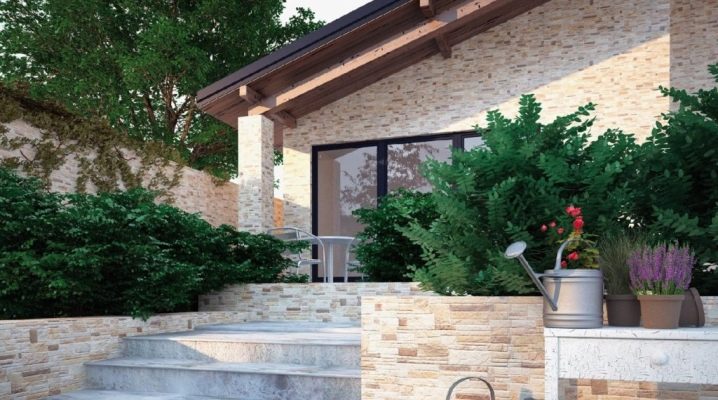
Exterior decoration of a house is a great way to qualitatively transform the look of your own home. There are quite a few types of materials designed to translate this kind of ideas into reality, and with their help you can turn an ordinary house into a stylish mansion.
Facade tiles are considered one of the most interesting solutions in this regard. Stone-like tiles will look very good on residential buildings. New production technologies will help to release a material that can completely imitate natural stone. At the same time, the colors and textures will be conveyed so thoroughly that it will be possible to distinguish artificial from natural only by weight.
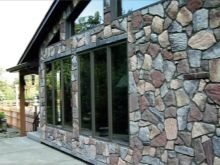
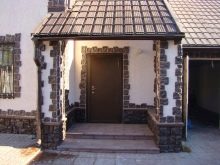
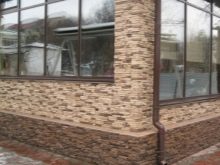
Advantages and disadvantages
Choosing a façade tile for a chipped, "torn" or other stone, one can assume that the unnatural material does not even have a minimal chance of being better. In fact, there are a lot of advantages to artificial analogs.
There are many advantages of using such a facing material for the facade:
- Resistant to damage and high strength.
- Resistance to temperature differences and all kinds of atmospheric phenomena.
- Environmental Safety.
- Ease of installation. It will not be difficult to make the wall cladding yourself using this material. Many ordinary people even produce the material themselves, using special forms.
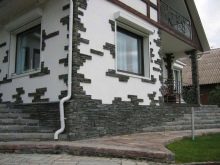
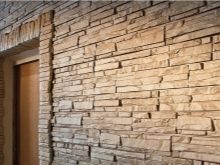
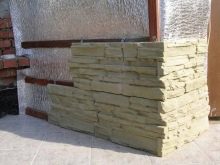
- Identical look. Facade cladding tiles perfectly imitate any subspecies of real stone. Sometimes it is almost impossible to find the differences between them.
- Long service life. According to the assurances of manufacturers, stone tiles will be able to last more than 100 years.
- Affordable price. Even the most expensive facade tiles with high-quality imitation stone will cost much less when compared to the cost of natural material. It is rather difficult to lay natural stone, it is impossible to do it with your own hands. The help of professionals will be needed, which will also have to be paid.


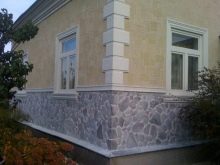
- Natural material can form only one type of surface, but artificial material can be recreated in different variations of the original texture, color and even relief. The decorative characteristics in this case are much more interesting.
- It can be chosen for both residential buildings and industrial buildings.
- The tile is very light, for this reason, the foundation does not need to be strengthened.
- Damaged products can be easily replaced with new ones. The parameters of a fake stone are more uniform, it is much easier to find the necessary material for replacement than to find a product from a natural rock of the same color and structure.
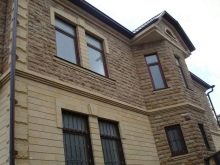
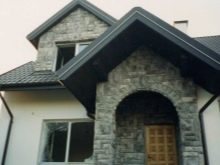
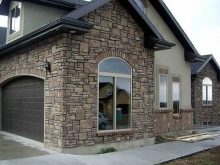
Such a popular material also has some disadvantages:
- a huge assortment of varieties of tiles will require knowledge of the methods of installation and maintenance of this product;
- some types of material will not allow dismantling with re-installation, so you will have to keep the material in stock in case of repair.
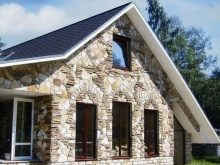
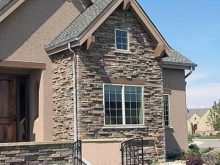
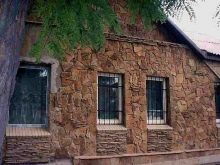
Varieties
Tiles with imitation of natural stone are divided into three types.
- Natural stone tiles. It is made from artificial components by firing. Clay, quartz and spar are used for production. The use of a special crumb will help to obtain an unusual effect.
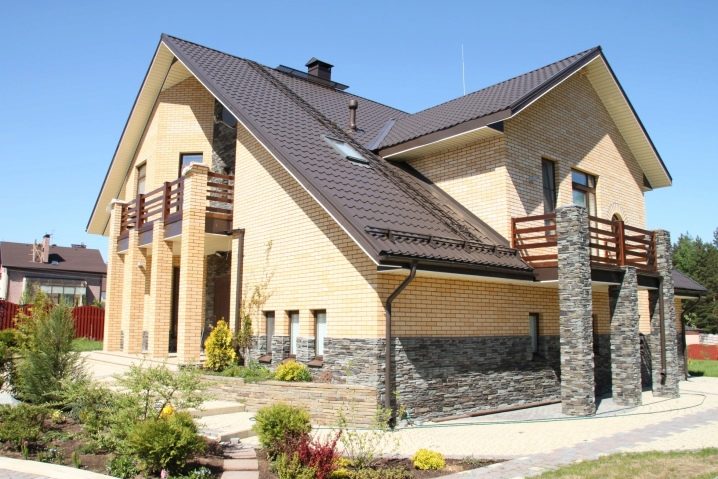
- Front "torn" stone. Facade tiles of this type are loved by many inhabitants. The composition of this material includes cement and sand, various pigments, all kinds of fillers.In fact, such tiles are produced from natural materials, but artificially.
- Wild stone. Other types of tiles are not in such high demand as wild stone. To repeat it, using tiles, special shapes are selected that give the desired relief to the material. Even on close inspection, only a professional will determine what material is in his hands.


In addition to stone tiles, today the inhabitants actively use stone panels. Many designers use them not only for facade decoration, but also for interior work. This material is made using the latest technologies, which makes it practically indistinguishable from beautiful natural rocks. Wall decorative stone panels are practical, stylish and easy to install. Another positive quality of this facing material is its cheapness. The most inexpensive of these panels are made from PVC. They will last a long time and will not require complex maintenance. They can be seen in the decoration of bathrooms, swimming pools, saunas, kitchens. They can often be seen even in offices, but still they are more often used for outdoor work.

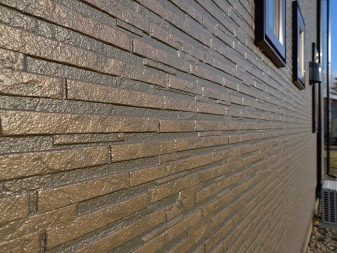
Basically, such a finishing material is produced using the rather high pressure casting method.
Depending on the composition of the panel, there may be:
- with a structure of a homogeneous type (made of high-quality PVC);
- with a combined structure (outside a layer of polymer, and inside from expanded polystyrene), the product is considered an excellent insulation, and therefore is in such high demand;
- made with expanded polystyrene and foam, these panels often also contain resins, foam and stone powder.
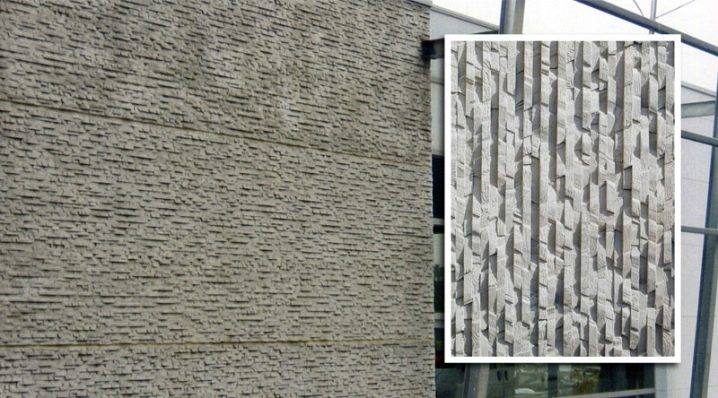
Tiles "under the stone" are often used as a basement finish. The part of the building that is most often exposed to various influences should have the most durable finish. And therefore, stone is the most suitable material for these purposes.
In building supermarkets, you can find a large selection of different models of facade panels.that imitate such types of stone as slate and limestone, sandstone and malachite, quartzite and topaz. Relief varieties (rubble stone and rocky) are in high demand. On sale you can also see materials that resemble flat basalt or onyx, granite or travertine, dolomite. Models in the form of stones neatly laid in rows in the shape of a rectangle are in great demand. Due to the variety of these stone panels, any consumer can quickly decorate their home for very little money. The most popular panel size is 500x500 mm.

Made from quartz sand and acrylic resins, flexible tiles are similar to decorative plaster based on polymers, therefore they have all similar technical characteristics, while being distinguished by excellent wear resistance.
You can always opt for flexible stone effect tiles. Flexible tiles for facade decoration well protect any external structures from adverse effects and, subject to all the intricacies of installation, as well as in the absence of violations of the operating mode, it will retain its protective properties for many years.
Stone-like facing tiles are produced both for home and for exterior decoration of various types of buildings, so it can increasingly be seen on the facades of the streets of modern cities.

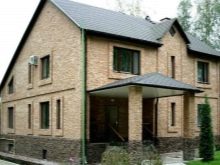
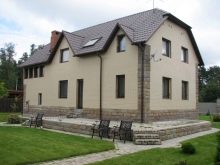
Colors and design
Facade tiles for stone can have various sizes, all kinds of interesting textures and the most popular shades. The newest capacities will make it possible to simulate virtually all natural stone breeds known to specialists. The latest collections of products are distinguished by their special uniqueness and detailed drawing of small elements. Nowadays, a stylish imitation of a stone, which in appearance resembles marble and onyx, is in special demand.This unique finishing material will give any home a special aristocratic appearance.
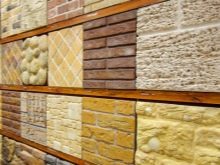
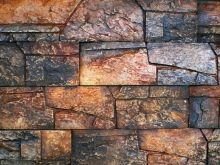
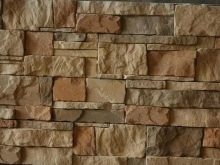
To highlight the originality of the design of their home, the owners try to combine several types of tiles that are made in a uniform color. So, the basement and window openings can be revetted with brown stone, and the walls with beige and milky.
The options look interesting when tiles are used occasionally or pointwise, highlighting specific parts of the house - doors, columns, porch and corners. In these cases, it is best to apply a contrasting look of the finish, which immediately stands out from the general background.
Today in stores you can find several types of decorative facade tiles for stone, which will have a different texture.
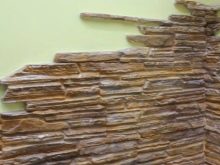
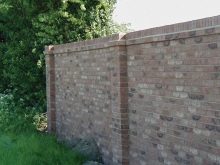
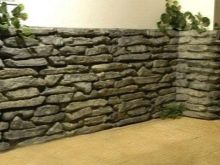
The most popular are several.
- Slate. The tile qualitatively repeats natural slate. It comes in gray and brown, in red and beige tones. The surface of the product is most often heterogeneous, has a "torn" texture. Decorative slate is suitable for finishing only plinths and entire facades in a building.
- Torn stone facade tiles. This product has a much less corrugated structure than slate, but it looks quite presentable. Popular shades: gray and beige, red is very popular. It can be used for cladding the basement of walls and facades, windows.

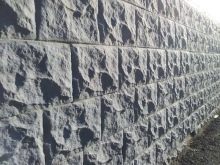

- Imitation brick. Facing with real brick will be quite expensive, for this reason many ordinary people choose its cheaper counterpart. This option is the most convenient to install and is almost indistinguishable from a real brick. In the assortment you can find products of red and brown colors, sand and brown colors. Modern stone effect tiles will amaze you with the variety of their textures and shades, which will allow you to create the most original facade design.
Due to the rich color palette, you can always choose any color of artificial stone: from light beige and white tones to dark brown and black colors. This diversity helps to create a truly harmonious combination of the building and the surrounding landscape.

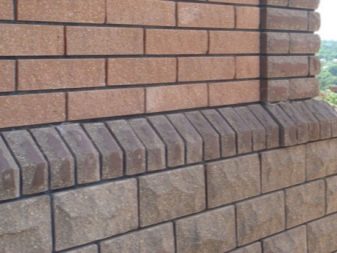
Cladding methods
Tiling the exterior walls with stone-like tiles with your own hands is actually simple.
There are two cladding techniques:
- "Wet" way of laying facade tiles. To do this, you will need to properly level the surface of the walls with your own hands, lay plates on these walls using special glue. This is a common process for installing tiles.
- "Dry" way of laying facade tiles. With this method, the tiles are held to the outer walls of your house on self-tapping screws.
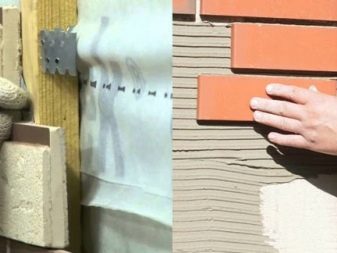
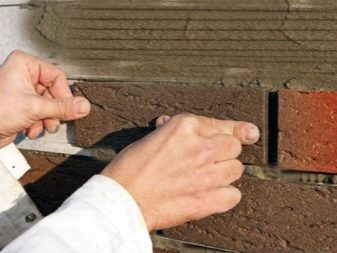
The choice of this or that method depends not only on the personal preferences of the owner of the house, but also on the characteristics of the dwelling itself, the state of its walls, the material of their construction.
Ask for advice from experts who can help you determine exactly which technique is most relevant to your home. But it is better to resolve this issue before you buy facing materials, forms, the necessary tools and glue.
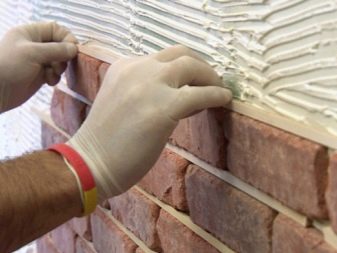

Beautiful examples of cladding
Facade stone tiles are an elegant decoration of a building, which helps to create its elegant and stylish look.
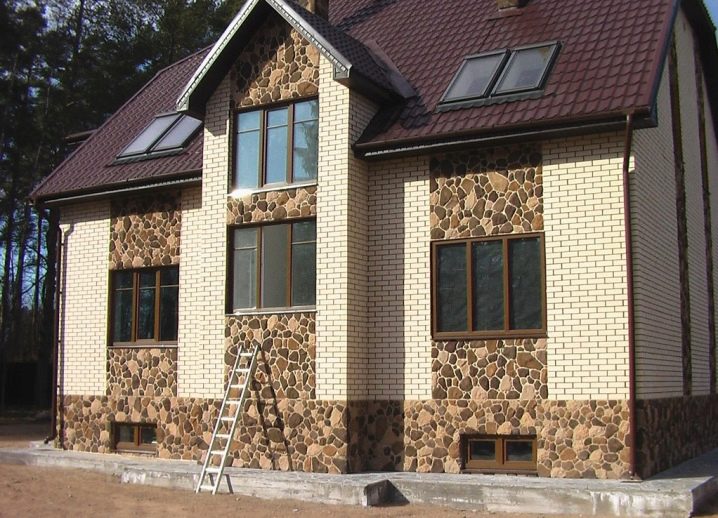
The facade decorated with tiles imitating the "old" stone will look very unusual.
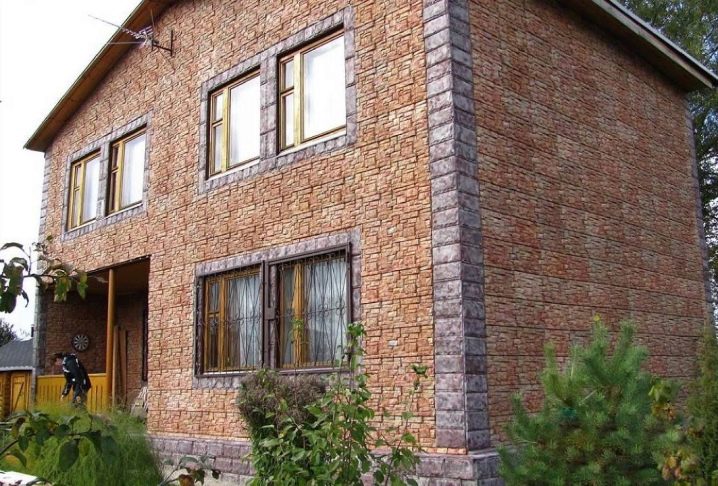
One of the most stylish types of decorative tiles is the “rubble stone” style.
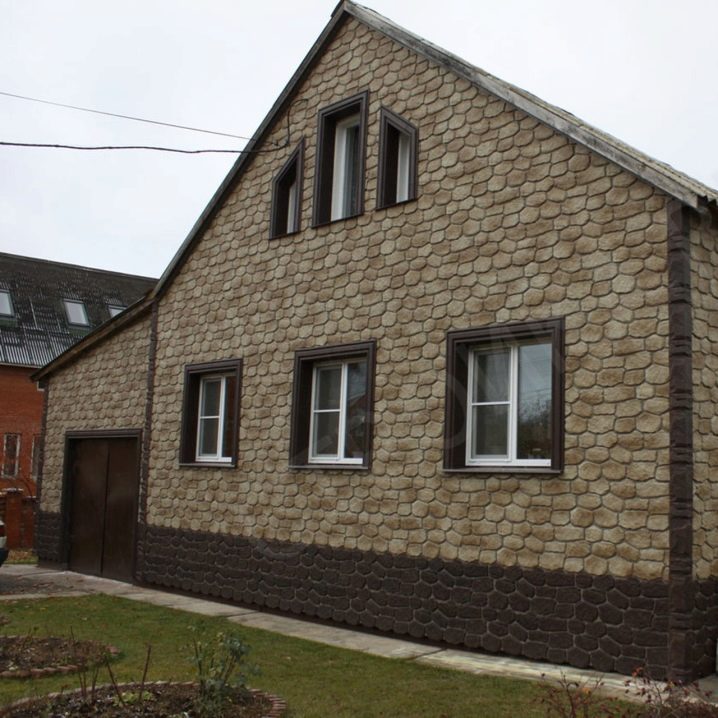
The stone goes well with wood and metal.
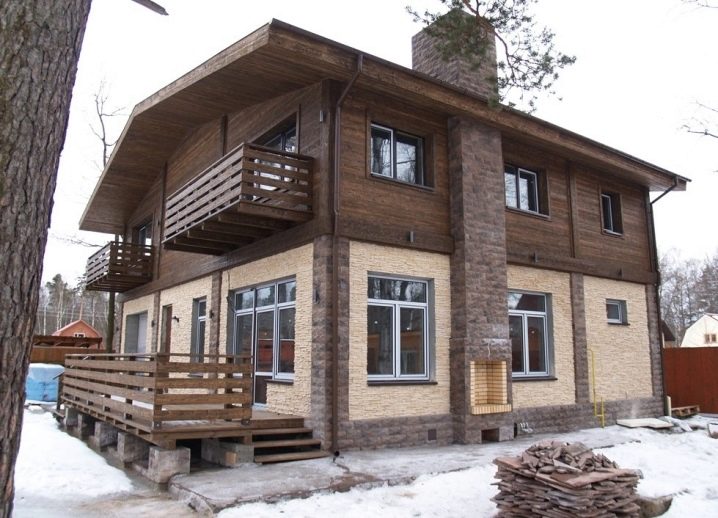
The process of creating a front tile "torn stone" with your own hands is shown in the following video.













The comment was sent successfully.